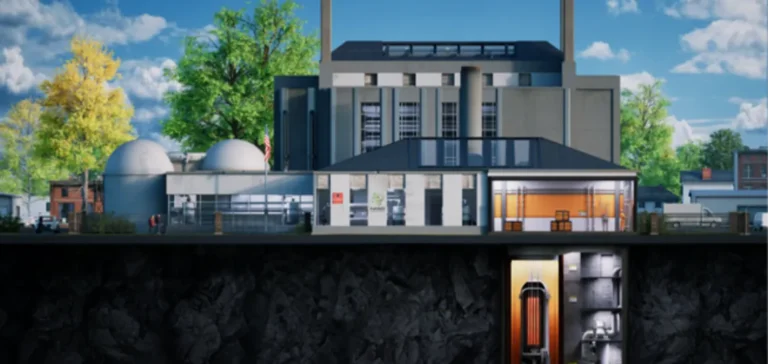Nano Nuclear Energy Inc. has announced a ceremony on the University of Illinois Urbana-Champaign campus on October 24 to mark the start of drilling work for its patented modular reactor, KRONOS MMR™. This step represents a critical phase in the development of the microreactor prototype, designed for industrial, military, and off-grid applications. The project is being conducted in partnership with the Grainger College of Engineering at the university, one of the most recognised nuclear engineering research centres in the United States.
A key milestone before construction permit submission
Site characterisation and preliminary geotechnical activities will be carried out by engineering firm AECOM. This data will support the construction permit application Nano Nuclear plans to submit to the Nuclear Regulatory Commission (NRC) in the first quarter of 2026. The company stated that this milestone puts its KRONOS MMR™ reactor ahead of other microreactor projects currently under development in North America.
The KRONOS MMR™ (Micro Modular Reactor) system is designed to deliver 15 MWe (45 MWth) of emission-free electrical power with multi-decade lifespan. The reactor uses meltdown-resistant TRISO (TRi-structural ISOtropic particle fuel) and passive helium cooling. It is engineered to shut down safely without human intervention or external power in the event of an incident, a concept referred to as “walk-away safety.”
Ambitious technical and commercial objectives
Nano Nuclear aims to position KRONOS MMR™ as a stable, decentralised power solution suited for industrial sites, data centres, military installations, and remote communities. The reactor is also designed to operate independently from the main power grid, supporting “full island-mode microgrid” capabilities.
The October 24 event will gather representatives from Nano Nuclear, the University of Illinois, federal and state governments, and industry partners. Expected speakers include Jay Yu, Founder and Chairman of Nano Nuclear, James Walker, Chief Executive Officer, and Florent Heidet, Chief Technology Officer. Members of the company’s advisory board, which includes former U.S. senior officials, will also be in attendance.
Florent Heidet stated that collaboration with the University of Illinois is accelerating development of a full-scale demonstration unit of the KRONOS MMR™, reinforcing the university’s position as a nuclear engineering innovation hub. The partnership aims to demonstrate the reactor’s industrial feasibility and its potential to meet low-carbon energy needs.
Caleb Brooks, nuclear engineering professor and project lead at the university, noted that fieldwork data will support the environmental and technical safety review process for the construction permit.






















